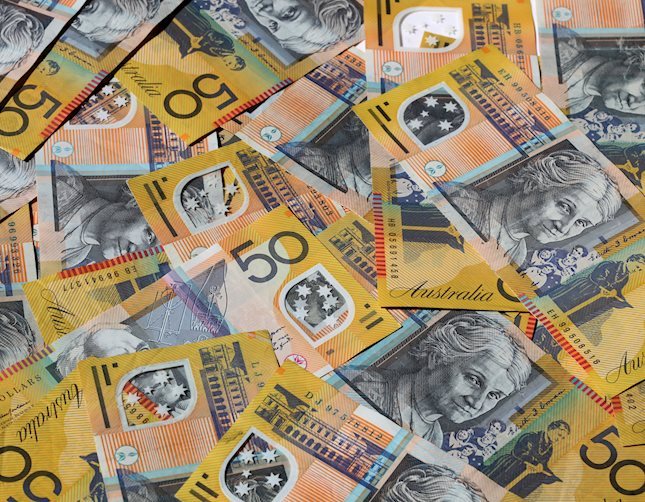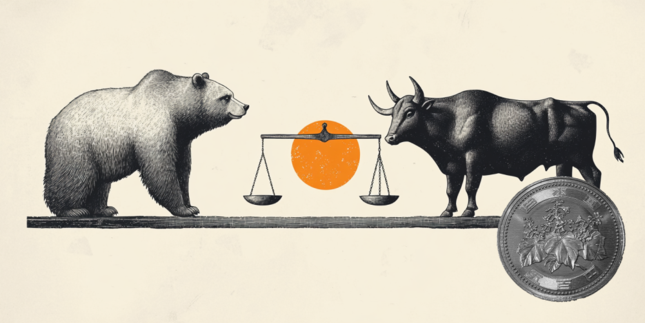AUD/USD Forecast and News
AUD/USD nosedives to near 0.6050 as RBA dovish bets swell dramatically
AUD/USD falls like there is no tomorrow due to a significant acceleration in RBA dovish bets. The RBA is expected to cut its Official Cash Rate (OCR) in all three next policy meetings. US NFP data for March has come in at 228K, beating estimates of 135K.
Latest Australian Dollar News
AUD/USD Technical Overview
The AUD/USD pair tanks more than 3.5% below 0.6100 during early North American trading hours on Friday. The Aussie pair plummets like a house of cards as the new suite of tariffs by United States (US) President Donald Trump has prompted market expectations for the Reserve Bank of Australia (RBA) to cut interest rates aggressively this year. The pair has made an intraday low of 0.6049, the lowest level seen in almost five years.
Fundamental Overview
Analysts at ANZ Bank expect the RBA to cut interest rates in all the next three policy meetings in May, July, and August. Additionally, the bank also sees the possibility of a larger-than-usual interest rate cut of 50 basis points (bps) in May if global growth deteriorates significantly.
In addition to bloating RBA dovish bets, fears of a potential trade war between the US and China have also weighed on the Australian Dollar (AUD). During European trading hours on Friday, Beijing threatened to impose additional tariffs of 34% on all US imports from April 10 as a countermeasure to Trump’s reciprocal tariffs announced on Wednesday.
Escalating concerns over the surrendering Chinese economic outlook weighs on the Aussie dollar, given that Australia relies significantly on its exports to China.
Meanwhile, the US Dollar (USD) strives to gauge support due to comfort from upbeat Nonfarm Payrolls (NFP) data for March after surrendering its intraday gains. The US NFP report showed that the economy added 228K fresh workers, significantly higher than estimates of 135K and the former reading of 117K, downwardly revised from 151K. The Unemployment Rate accelerated to 4.2% against estimates and the prior release of 4.1%.
Average Hourly Earnings, a key measure of wage growth, rose moderately by 3.8% year-on-year compared to expectations of 3.9% and the former reading of 4%.
SPECIAL WEEKLY FORECAST
Interested in weekly AUD/USD forecasts? Our experts make weekly updates forecasting the next possible moves of the Australian Dollar-US Dollar pair. Here you can find the most recent forecast by our market experts:

AUD/USD: Interim top confirmed, 0.7000 at risk Premium
The AUD/USD pair kept falling in the last few days, reaching a fresh multi-week low of 0.7263 on Friday, to close the trading week a handful of pips above it.
AUD/USD Big Picture
AUD/USD Bullish Themes
AUD/USD Bearish Themes
Latest AUD Analysis
Editors' picks

EUR/USD accelerates losses to 1.0930 on stronger Dollar
The US Dollar's recovery regains extra impulse sending the US Dollar Index to fresh highs and relegating EUR/USD to navigate the area of daily troughs around 1.0930 in the latter part of Friday's session.

GBP/USD plummets to four-week lows near 1.2850
The US Dollar's rebound keep gathering steam and now sends GBP/USD to the area of multi-week lows in the 1.2850 region amid the broad-based pullback in the risk-associated universe.

Japanese Yen consolidates near multi-month top against USD as traders await US NFP report
The Japanese Yen bulls retain control amid worries about the economic fallout from Trump’s tariffs. The risk-off mood and relatively hawkish BoJ expectations further lend support to the safe-haven JPY. The USD selling bias keeps USD/JPY close to a multi-month low ahead of the crucial US NFP release.

Gold trades on the back foot, flirts with $3,000
Gold prices are accelerating their daily decline, steadily approaching the critical $3,000 per troy ounce mark as the Greenback's rebound gains extra momentum and US yields tighten their retracement.

WTI tanks almost 8% as Trump tariffs stoke global economic risks
The Oil price continues to bleed as reciprocal tariffs announced by US President Trump have stoked fears of a global economic slowdown. A potential tariff war between the US and China would further deteriorate the Oil demand outlook. IMF Georgieva has urged the US and its trading partners to resolve trade issues.
Majors
Cryptocurrencies
Signatures
AUD/USD YEARLY FORECAST
What would happen to the AUD/USD this year? A brief update from our experts on where the AUD/USD can go in the upcoming months.
AUD/USD FORECAST 2025
The battle between the Australian Dollar (AUD) and the US Dollar (USD) will be one worth watching in 2025, with central banks stealing the limelight. The Reserve Bank of Australia (RBA) has kept interest rates at record highs whilst most of its overseas counterparts started the loosening process. The US Federal Reserve (Fed), on the other hand, has trimmed the benchmark interest rate by 100 bps through 2024 and aims to slow the pace of cuts in 2025. The central banks’ imbalance aims for record lows in AUD/USD.
MOST INFLUENTIAL POLITICAL EVENTS IN 2025 FOR AUD/USD
Beyond central banks, market players will be attentive to tariffs. The second coming of Donald Trump to the White House anticipates a global Trade War that could fuel inflationary pressures not only in the United States, but also in all major economies.
Given Trump’s personal battle with China, the Australian economy could end up benefiting from fresh commercial interactions with its neighbour giant.
About AUD/USD
AUD/USD, The 'Aussie'
The AUD/USD pair, also called the “Aussie”, tells the trader how many US dollars (the quote currency) are needed to purchase one Australian dollar (the base currency). This currency pair is also known as the "Aussie". Together with the New Zealand Dollar and the Canadian Dollar, the AUD is a commodity currency, that is a currency whose country's exports are largely comprised of raw materials (precious metals, oil, agriculture, etc.).
The interest rates set by the Reserve Bank of Australia (RBA) have been among the highest of industrialized countries and the relatively high liquidity of the AUD has made it an attractive tool for carry traders looking for a currency with the highest yields. These factors made the AUD very popular among currency traders.
AUD/USD CORRELATIONS
Australia is a big exporter to China and its economy and currency reflect any change in the situation in that country. The prevailing view is that the Australian Dollar offers diversification benefits in a portfolio containing the major world currencies because of its greater exposure to Asian economies.
This correlation with the Shanghai stock exchange is to be added to the correlation it has with gold. The pair AUD/USD often rises and falls along with the price of gold. In the financial world, gold is viewed as a safe haven against inflation and it is one of the most traded commodities.
ORGANIZATIONS, PEOPLE AND ECONOMIC DATA THAT INFLUENCE AUD/USD
The AUD/USD news can be seriously affected by the decisions taken by these organizations and people:
- Reserve Bank of Australia (RBA) that issues statements and decides on the interest rates of the country. Its president is Michele Bullock.
- Australian Government and its Department of Finance that implement policies that affect the economy of the country.
- The US Government: events as administration statements, new laws and regulations or fiscal policy can increase or decrease the value of the US Dollar and the currencies traded against it, in this case, the Australian Dollar.
- Fed, the Federal Reserve of the United States whose president is Jerome Powell. The Fed controls the monetary policy, through active duties such as managing interest rates, setting the reserve requirement, and acting as a lender of last resort to the banking sector during times of bank insolvency or financial crisis.
In terms of economic data, as for most currencies, the AUDUSD traders have to keep an eye on:
- GDP (Gross Domestic Product), the total market value of all final goods and services produced in a country. It is a gross measure of market activity because it indicates the pace at which a country's economy is growing or decreasing. Generally speaking, a high reading or a better than expected number is seen as positive for the AUD, while a low reading is negative.
- Inflation measured by key indicators as the CPI (Core Price Index) and the PPI (Production Price Index), which reflect changes in purchasing trends.
- Current Trade Balance, a balance between exports and imports of total goods and services. A positive value shows trade surplus, while a negative value shows trade deficit. If a steady demand in exchange for AUD exports is seen, that would turn into a positive growth in the trade balance, and that should be positive for the AUD.
Michele Bullock
Michele Bullock is an Australian economist who is currently governor of the Reserve Bank of Australia. She commenced as governor on 18 September 2023, and is the first woman to hold the role. She is Chair of the Reserve Bank Board, Payments System Board and Council of Financial Regulators. Prior to her current role, Ms Bullock was the Deputy Governor of the Reserve Bank of Australia.
Michele Bullock RBA's Profile and Wikipedia
Jerome Powell
Jerome Powell took office as chairman of the Board of Governors of the Federal Reserve System in February 2018, for a four-year term ending in February 2022. His term as a member of the Board of Governors will expire January 31, 2028. Born in Washington D.C., he received a bachelor’s degree in politics from Princeton University in 1975 and earned a law degree from Georgetown University in 1979. Powell served as an assistant secretary and as undersecretary of the Treasury under President George H.W. Bush. He also worked as a lawyer and investment banker in New York City. From 1997 through 2005, Powell was a partner at The Carlyle Group.
Jerome Powell Fed's Profile and Wikipedia
RBA NEWS & ANALYSIS
FED NEWS & ANALYSIS
ASSETS THAT INFLUENCE AUD/USD THE MOST
- Currencies: NZD and JPY (New Zealand and Japan are important regional partners of Australia). Other important group of influent pairs includes: EUR/USD, GBP/USD, USD/JPY, USD/CHF, NZD/USD and USD/CAD.
- Commodities: The most important is Gold, as already explained above, but also Iron Ore and Natural Gas.
- Bonds: GACGB10 (Australian Government Bonds Generic Yield 10 Year), GNZGB10 (New Zealand Government Bond 10 Year) and T-NOTE 10Y (10 year US Treasury note).
- Indices: S&P/ASX 200 (stocks of the Australian Securities Exchange), S&P/TSX Global Gold Index (includes producers of gold and related products at the Toronto Stock Exchange).